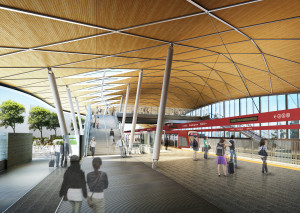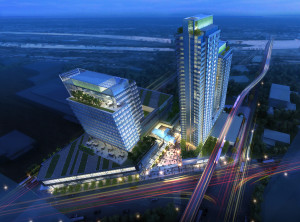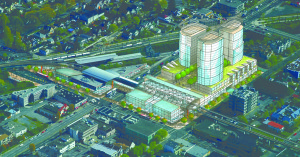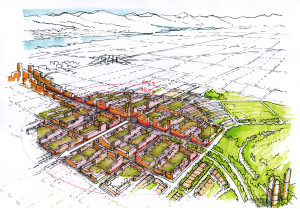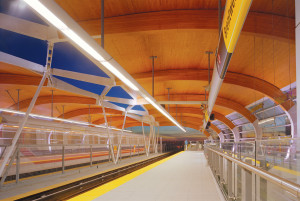By Matthew Varcak
Jeff Doble is playing a key role in the future of one of the world’s most dynamic cities, Riyadh, Saudi Arabia. He is designing the new Riyadh Metro System and Bus Rapid Transit System — the largest transit system in the world to be designed and built at one time.
He talked about the priorities that cities set down in creating their new systems.
1) Iconic design. Doble says that the goal is to design structures which residents will recognize. Branding becomes important for cities establishing a transit system where there previously was none, according to Doble.
2) An easy ride. Clients also strive to create the best passenger experience. This means riders must feel safe and have clear signage and way finding.
3) A good fit. Another important factor is how the transit system is integrated into the community. “It must respond to and respect the community,” Doble said.
In some instances, a station is integrated into an established city, but other times the station forms the hub and the city develops around it.
According to Doble, less successful are those stations built near major highway corridors, despite the available space and decreased cost. More successful are the stations built in the center of cities (sometimes underground), although it is more expensive and more difficult to accomplish.
4) Sustainability. This means designing a system which requires little maintenance and constructing it out of sustainable, durable and local materials. In Riyadh, this involves using local stone. In Vancouver, local wood is used to “introduce warmth into an otherwise sterile environment.”
5) Traffic. Ridership is what clients strive for above all else, according to Doble, since revenue has to roll in for a system ultimately to be a success.
Looking into the future of transit design, Doble says stations will become increasingly mixed-use, incorporating retail stores or offices and becoming a pavilion themselves.
“Every station needs to consider how they will be integrated,” Doble said. “Bring the stations where the people are and where they need to get to.”

